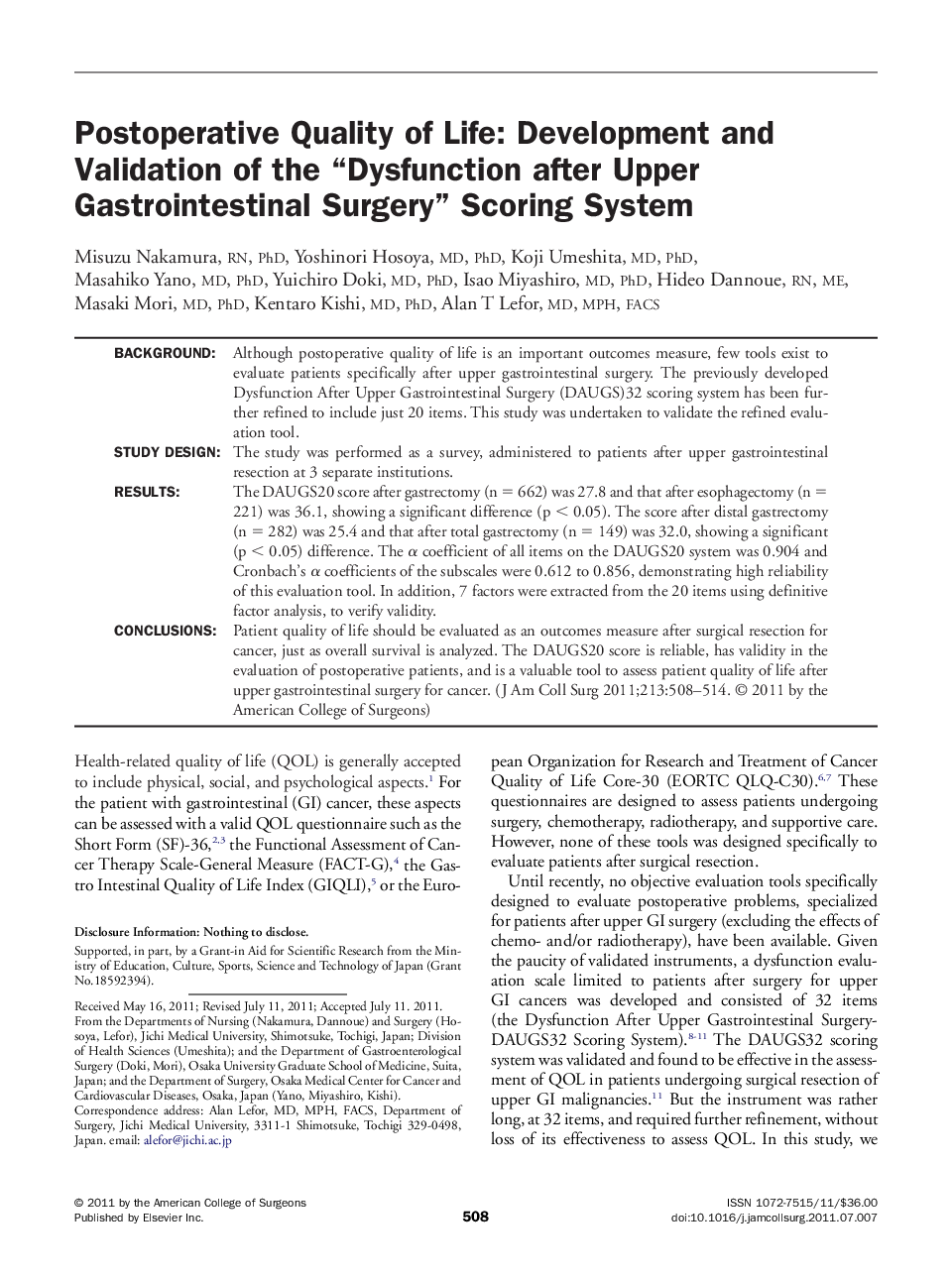| Article ID | Journal | Published Year | Pages | File Type |
|---|---|---|---|---|
| 4294041 | Journal of the American College of Surgeons | 2011 | 7 Pages |
BackgroundAlthough postoperative quality of life is an important outcomes measure, few tools exist to evaluate patients specifically after upper gastrointestinal surgery. The previously developed Dysfunction After Upper Gastrointestinal Surgery (DAUGS)32 scoring system has been further refined to include just 20 items. This study was undertaken to validate the refined evaluation tool.Study DesignThe study was performed as a survey, administered to patients after upper gastrointestinal resection at 3 separate institutions.ResultsThe DAUGS20 score after gastrectomy (n = 662) was 27.8 and that after esophagectomy (n = 221) was 36.1, showing a significant difference (p < 0.05). The score after distal gastrectomy (n = 282) was 25.4 and that after total gastrectomy (n = 149) was 32.0, showing a significant (p < 0.05) difference. The α coefficient of all items on the DAUGS20 system was 0.904 and Cronbach's α coefficients of the subscales were 0.612 to 0.856, demonstrating high reliability of this evaluation tool. In addition, 7 factors were extracted from the 20 items using definitive factor analysis, to verify validity.ConclusionsPatient quality of life should be evaluated as an outcomes measure after surgical resection for cancer, just as overall survival is analyzed. The DAUGS20 score is reliable, has validity in the evaluation of postoperative patients, and is a valuable tool to assess patient quality of life after upper gastrointestinal surgery for cancer.
